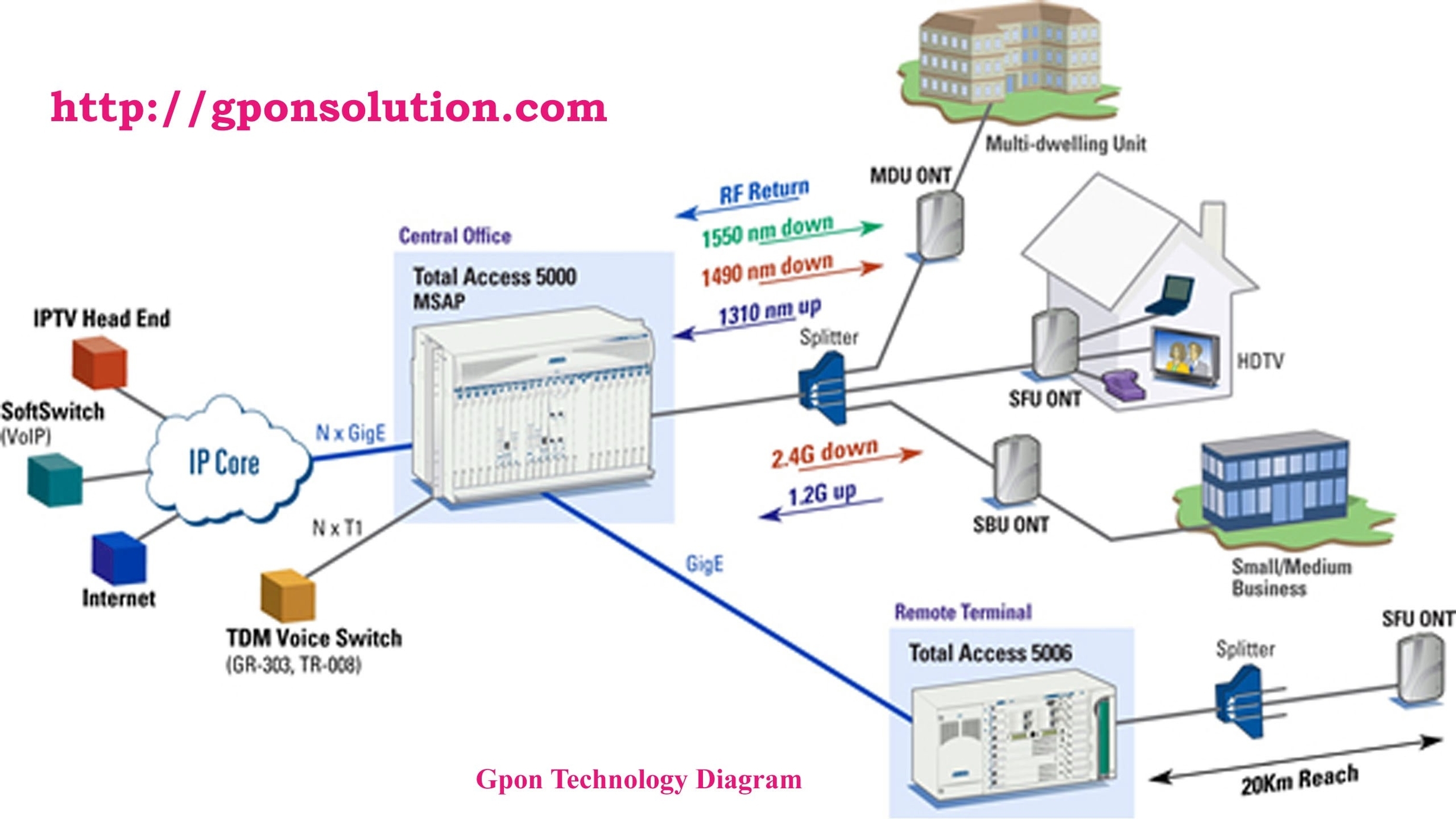
GPON technology is a type of fiber-optic communication that delivers high-speed broadband access to end users. GPON stands for Gigabit Passive Optical Network, which means that it can support data rates up to 2.488 Gbps downstream and 1.244 Gbps upstream. GPON uses a point-to-multipoint architecture, where a single optical fiber from the service provider is split into multiple fibers that connect to different optical network units (ONUs) or optical network terminals (ONTs) at the user premises. GPON has several advantages over traditional copper-based networks, such as higher bandwidth, longer reach, lower power consumption, and lower maintenance costs.
GPON works by using wavelength-division multiplexing (WDM) to transmit and receive data on different wavelengths of light. The downstream data from the service provider to the users is transmitted on a 1490 nm wavelength, while the upstream data from the users to the service provider is transmitted on a 1310 nm wavelength. A third wavelength of 1550 nm is reserved for video broadcasting. GPON uses a special encapsulation method called GPON encapsulation method (GEM) to carry different types of traffic, such as Ethernet, ATM, or voice, over the same fiber. GEM allows for fragmentation and reassembly of data frames, as well as quality of service (QoS) and security features.
GPON consists of four main components: the service node interface (SNI), the optical line terminal (OLT), the optical distribution network (ODN), and the optical network unit (ONU) or optical network terminal (ONT). The SNI is the interface between the service provider’s network and the GPON network. The OLT is the device that aggregates and distributes the optical signals from the SNIs to the ONUs or ONTs. The ODN is the passive optical network that consists of optical fibers and splitters that connect the OLT to the ONUs or ONTs. The ONU or ONT is the device that converts the optical signals to electrical signals and provides the user with the network access.
GPON employs several techniques to ensure efficient and reliable data transmission and reception. One of these techniques is ranging, which is the process of synchronizing the ONUs or ONTs with the OLT and assigning them time slots for upstream transmission. Another technique is burst mode, which is the method of sending data in short bursts rather than continuously, to save power and bandwidth. A third technique is dynamic bandwidth allocation (DBA), which is the mechanism of allocating bandwidth to the ONUs or ON
